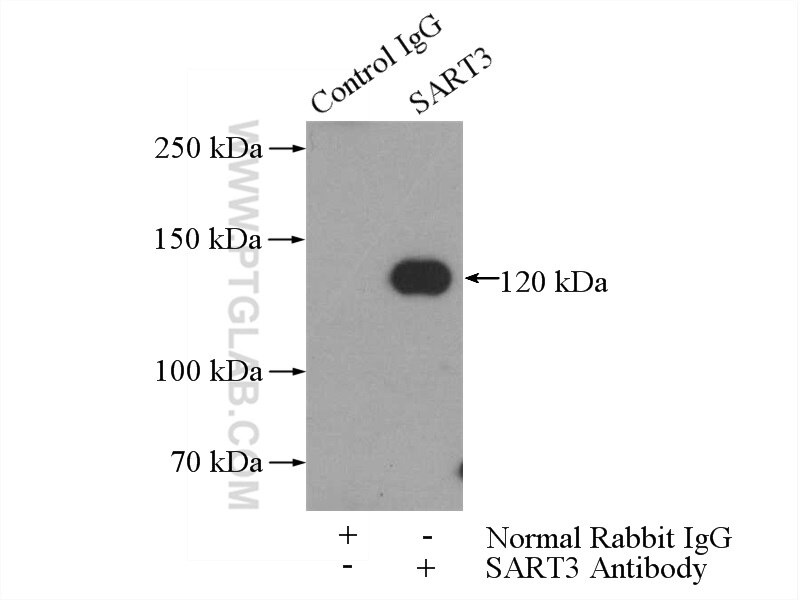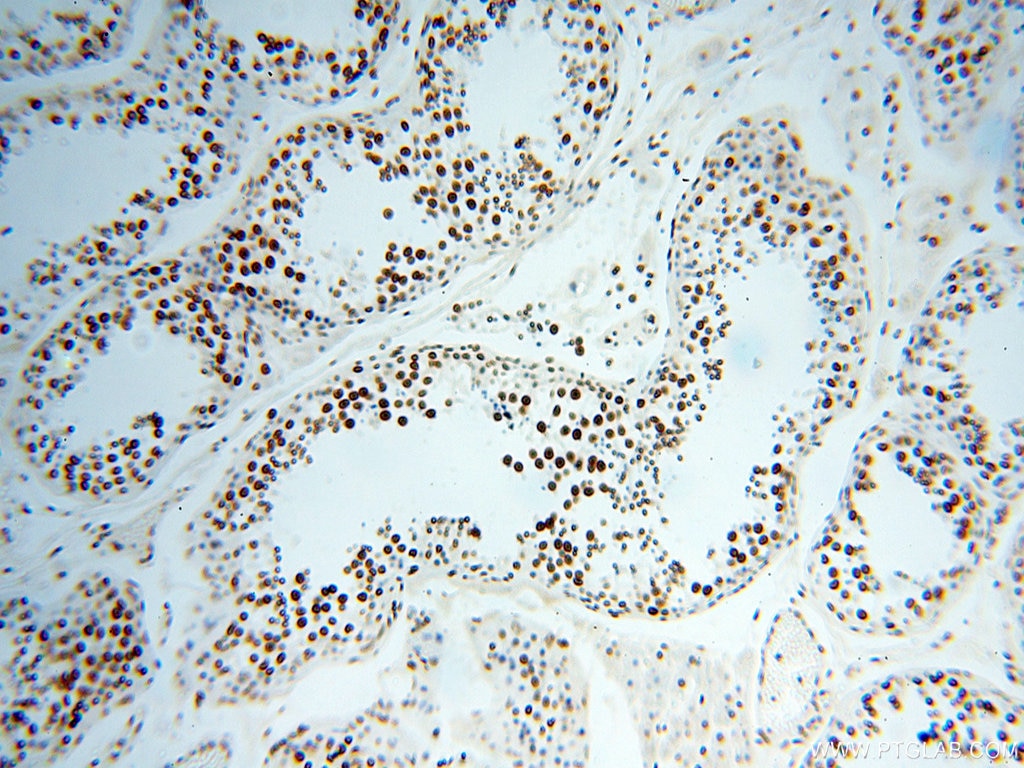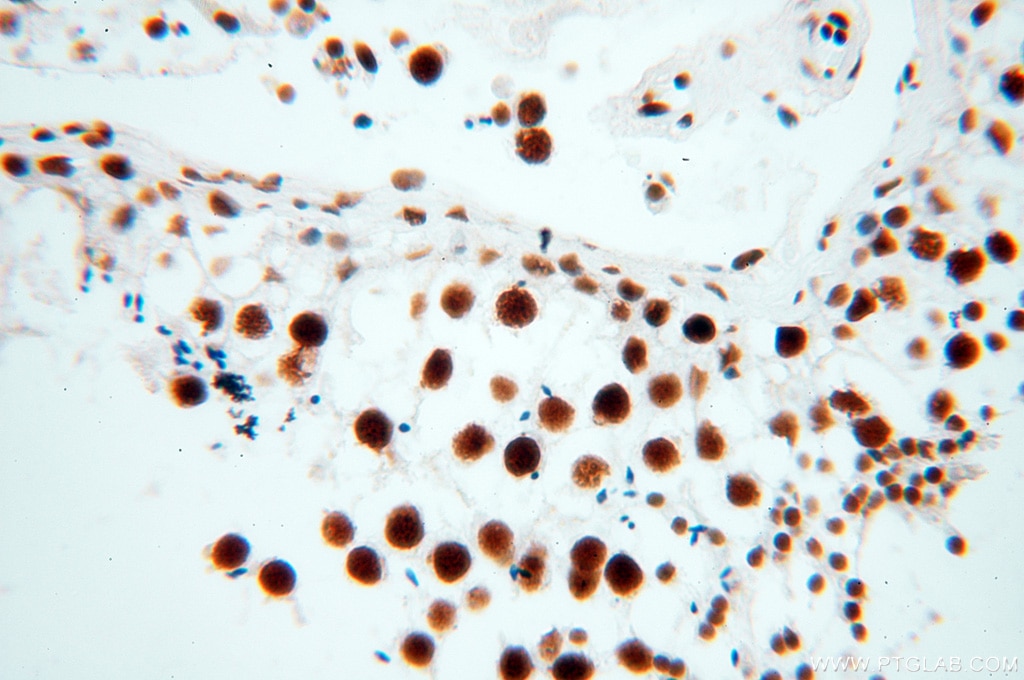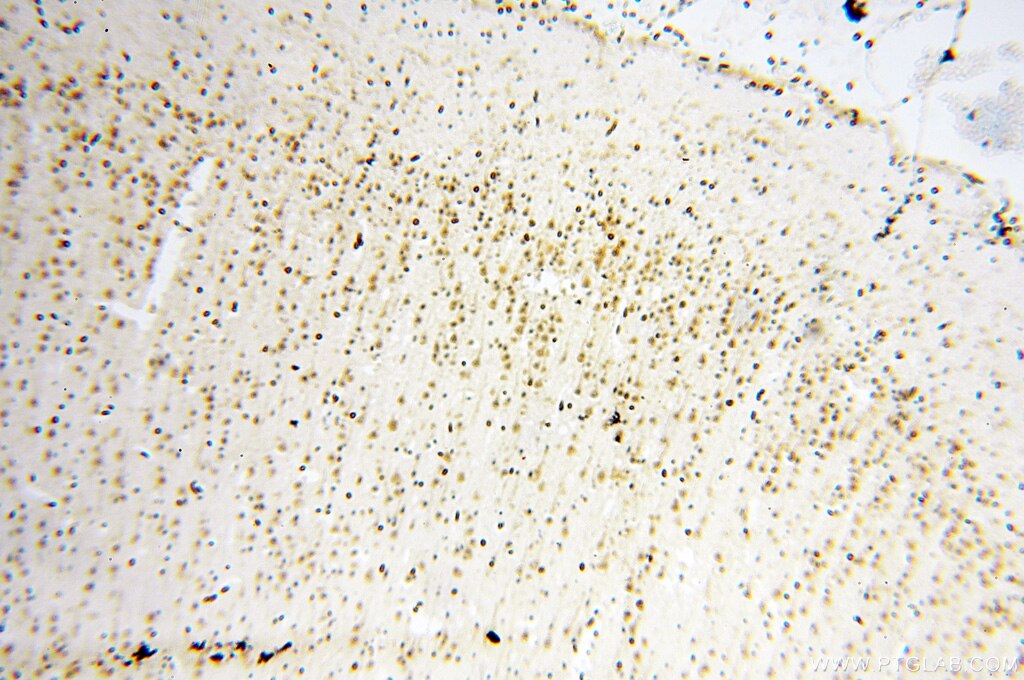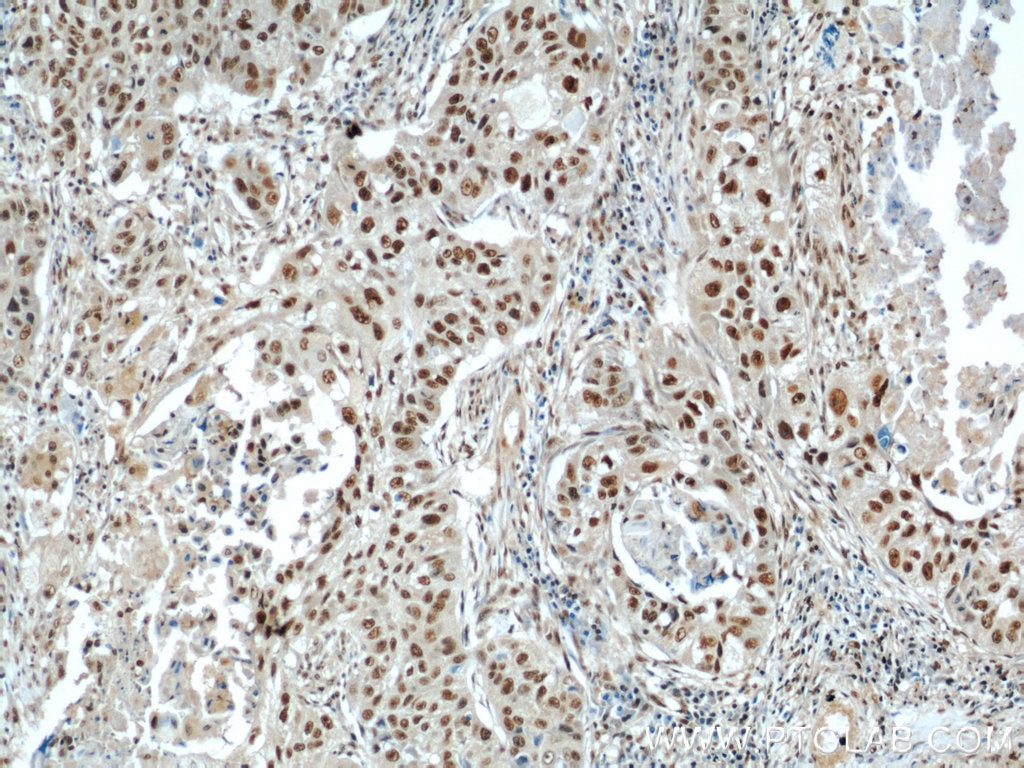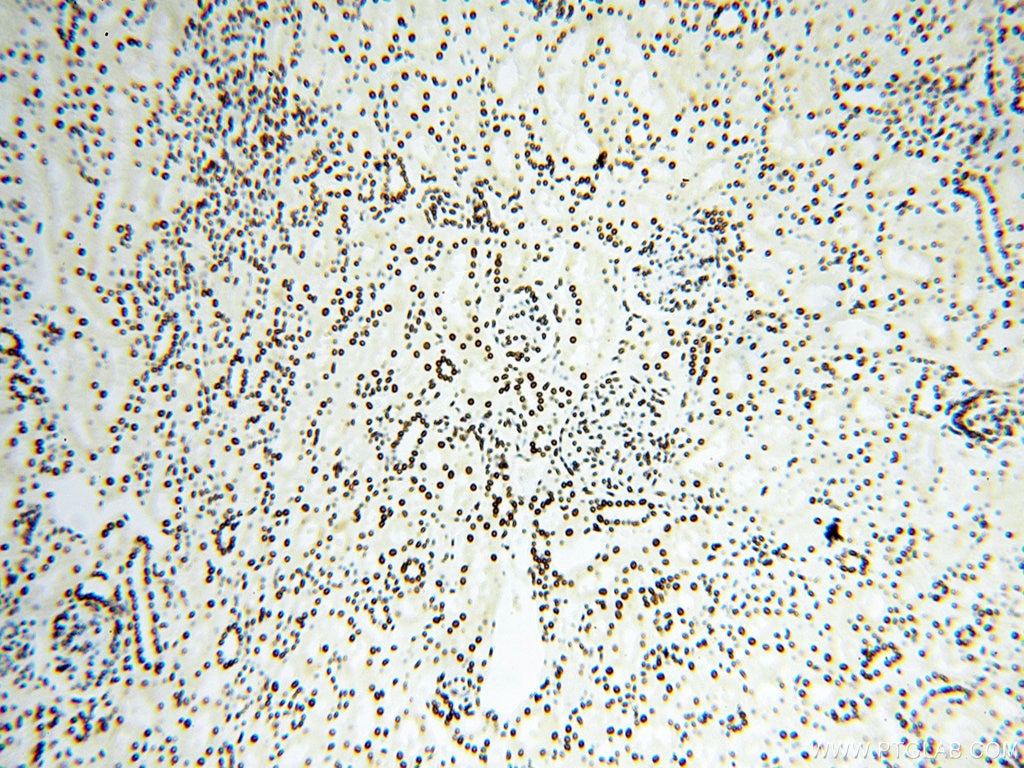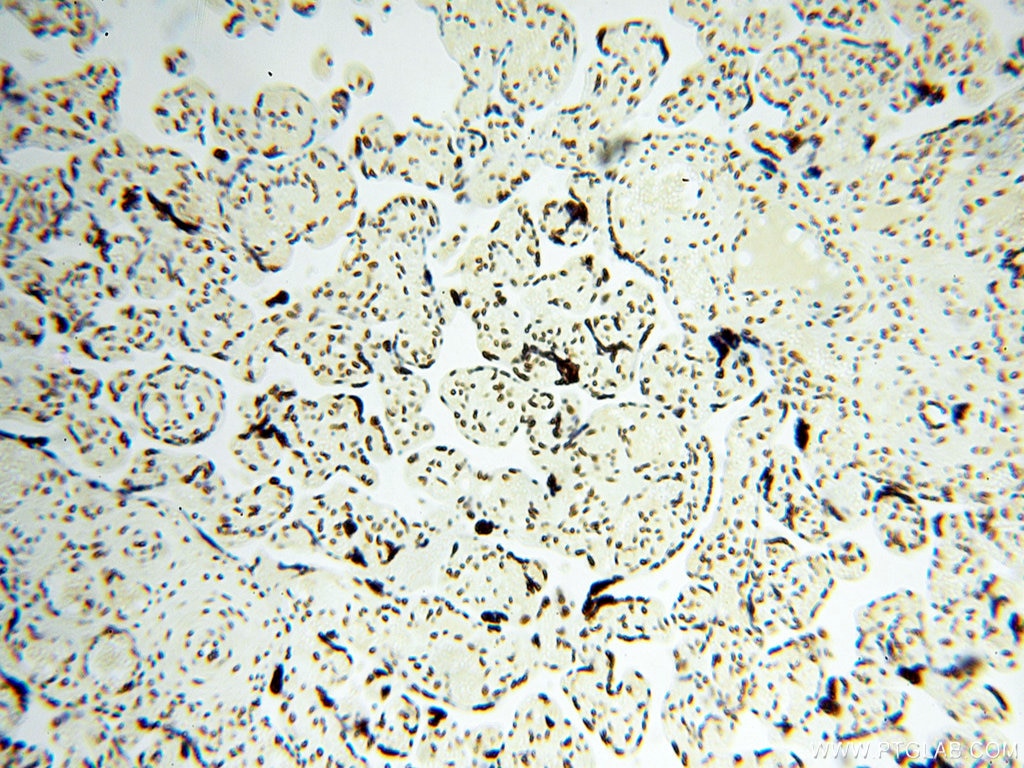SART3 Polyklonaler Antikörper
SART3 Polyklonal Antikörper für IHC, IP, WB,ELISA
Wirt / Isotyp
Kaninchen / IgG
Getestete Reaktivität
human, Maus, Ratte
Anwendung
WB, IP, IHC, ELISA
Konjugation
Unkonjugiert
Kat-Nr. : 18025-1-AP
Synonyme
Galerie der Validierungsdaten
Geprüfte Anwendungen
| Erfolgreiche Detektion in WB | Jurkat-Zellen |
| Erfolgreiche IP | HeLa-Zellen |
| Erfolgreiche Detektion in IHC | humanes Hodengewebe, humanes Eierstockgewebe, humanes Hautgewebe, humanes Hirngewebe, humanes Lebergewebe, humanes Lungenkarzinomgewebe, humanes Milzgewebe, humanes Nierengewebe, humanes Plazenta-Gewebe Hinweis: Antigendemaskierung mit TE-Puffer pH 9,0 empfohlen. (*) Wahlweise kann die Antigendemaskierung auch mit Citratpuffer pH 6,0 erfolgen. |
Empfohlene Verdünnung
| Anwendung | Verdünnung |
|---|---|
| Western Blot (WB) | WB : 1:2000-1:10000 |
| Immunpräzipitation (IP) | IP : 0.5-4.0 ug for 1.0-3.0 mg of total protein lysate |
| Immunhistochemie (IHC) | IHC : 1:20-1:200 |
| It is recommended that this reagent should be titrated in each testing system to obtain optimal results. | |
| Sample-dependent, check data in validation data gallery | |
Veröffentlichte Anwendungen
| WB | See 1 publications below |
| IHC | See 1 publications below |
| IP | See 2 publications below |
Produktinformation
18025-1-AP bindet in WB, IP, IHC, ELISA SART3 und zeigt Reaktivität mit human, Maus, Ratten
| Getestete Reaktivität | human, Maus, Ratte |
| In Publikationen genannte Reaktivität | human, Maus |
| Wirt / Isotyp | Kaninchen / IgG |
| Klonalität | Polyklonal |
| Typ | Antikörper |
| Immunogen | SART3 fusion protein Ag12590 |
| Vollständiger Name | squamous cell carcinoma antigen recognized by T cells 3 |
| Berechnetes Molekulargewicht | 963 aa, 110 kDa |
| Beobachtetes Molekulargewicht | 110-120 kDa |
| GenBank-Zugangsnummer | BC093784 |
| Gene symbol | SART3 |
| Gene ID (NCBI) | 9733 |
| Konjugation | Unkonjugiert |
| Form | Liquid |
| Reinigungsmethode | Antigen-Affinitätsreinigung |
| Lagerungspuffer | PBS mit 0.02% Natriumazid und 50% Glycerin pH 7.3. |
| Lagerungsbedingungen | Bei -20°C lagern. Nach dem Versand ein Jahr lang stabil Aliquotieren ist bei -20oC Lagerung nicht notwendig. 20ul Größen enthalten 0,1% BSA. |
Hintergrundinformationen
The process of mRNA splicing required assembly of pre-mRNA into a large, dynamic RNA-protein complex, in which 5 small nuclear RNAs and more than 50 protein components are incorporated into functional small nuclear ribonucleoproteins(snRNPs). SART3 interacts with U6 snRNA and functioned as a U6-specific recycling factor responsible for regeneration of base-paired U4/U6 snRNPs from post-spliceosomal free U4 and U6 snRNPs. Also it can interact and regulate Tat transactivation activity, and act as a cellular factor for HIV-1 gene expression and viral replication.
Protokolle
| Produktspezifische Protokolle | |
|---|---|
| WB protocol for SART3 antibody 18025-1-AP | Protokoll herunterladen |
| IHC protocol for SART3 antibody 18025-1-AP | Protokoll herunterladen |
| IP protocol for SART3 antibody 18025-1-AP | Protokoll herunterladen |
| Standard-Protokolle | |
|---|---|
| Klicken Sie hier, um unsere Standardprotokolle anzuzeigen |
Publikationen
| Species | Application | Title |
|---|---|---|
J Biol Chem Identification of a 35S U4/U6.U5 Tri-snRNP Complex Intermediate in Spliceosome Assembly. | ||
Mol Cell Biol USP15 deubiquitinates TUT1 associated with RNA metabolism and maintains cerebellar homeostasis. | ||
Aging (Albany NY) SART3, regulated by p53, is a biomarker for diagnosis, prognosis and immune infiltration in hepatocellular carcinoma |


